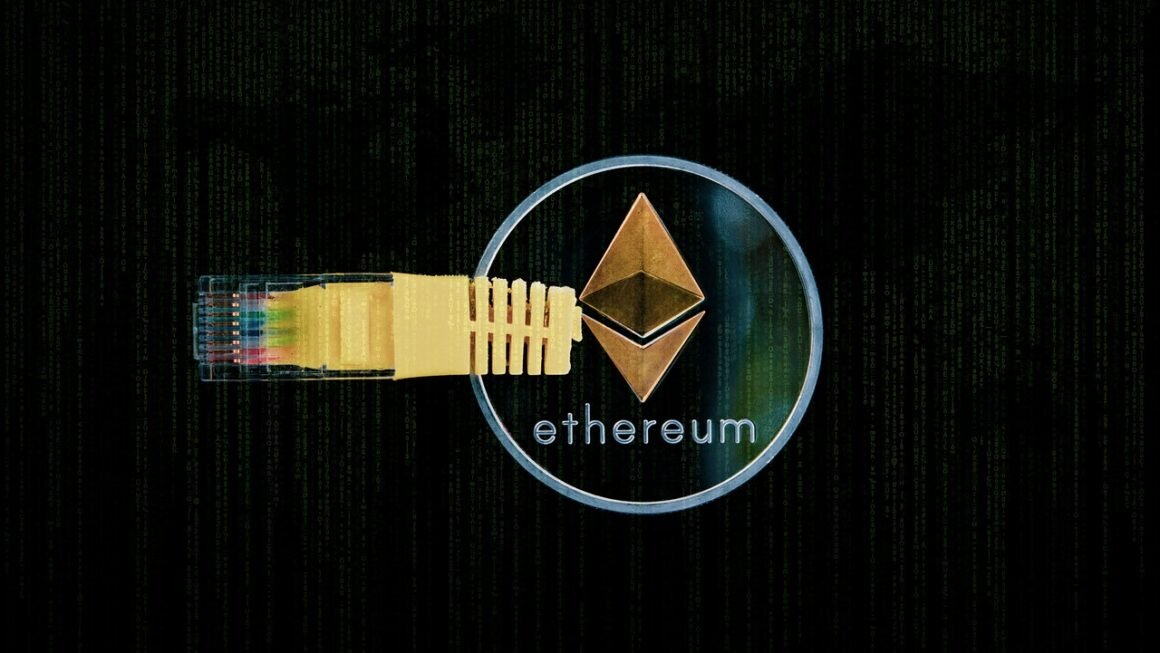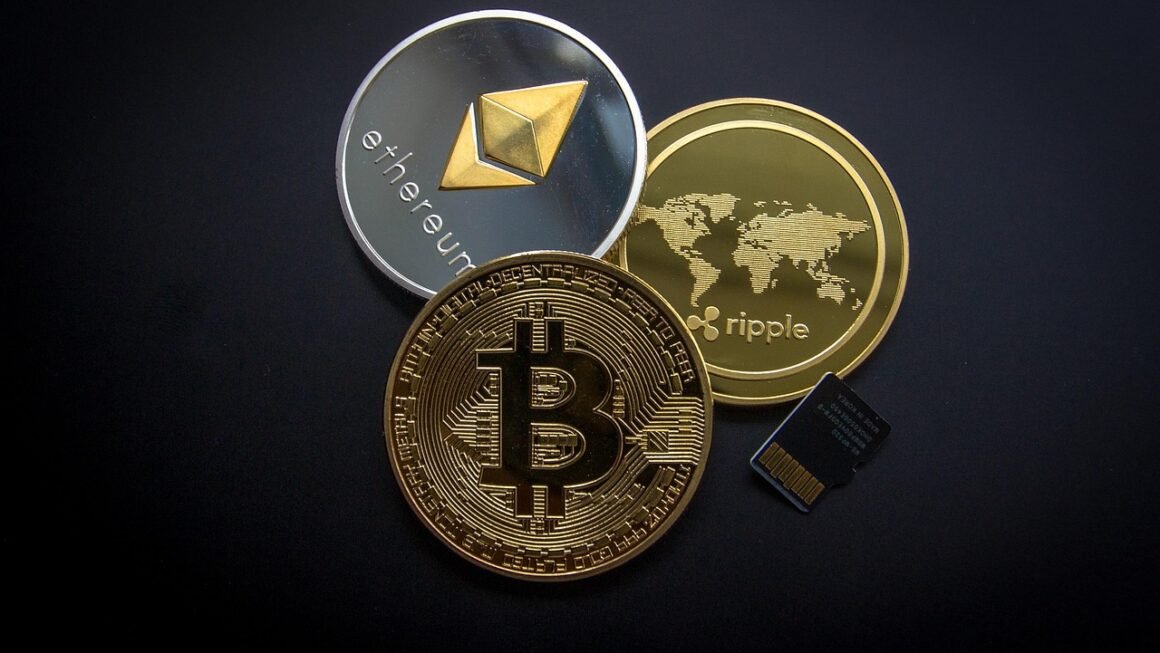Staying safe in the world of cryptocurrency can feel like navigating a digital minefield. The decentralized and largely unregulated nature of crypto makes it a prime target for cybercriminals. From phishing scams to sophisticated hacking attacks, the threats are real and constantly evolving. But with a solid understanding of the risks and the right security measures in place, you can significantly protect your digital assets and participate in the crypto revolution with confidence.
Understanding Crypto Security Threats
Common Types of Crypto Attacks
The crypto landscape is rife with potential security vulnerabilities. Understanding these threats is the first step towards protecting yourself. Here are some common types of attacks:
- Phishing: This involves tricking users into revealing their private keys or login credentials through deceptive emails, websites, or messages. For example, you might receive an email that looks like it’s from your crypto exchange, asking you to update your account information. Always double-check the sender’s address and the website URL before entering any sensitive information.
- Malware: Malicious software can be used to steal private keys, intercept transactions, or even take control of your device. Example: downloading a seemingly harmless application that secretly logs your keystrokes, capturing your crypto wallet password.
- Exchange Hacks: Crypto exchanges are often targeted by hackers due to the large amounts of cryptocurrency they hold. If an exchange is compromised, your funds could be at risk. The Mt. Gox hack is a prime example of the devastating impact of exchange breaches.
- 51% Attacks: In Proof-of-Work (PoW) blockchains, a malicious actor controlling more than 50% of the network’s hashing power can manipulate transactions and potentially double-spend coins. This is more likely to occur in smaller blockchains with less robust security.
- Rug Pulls: In the DeFi space, a rug pull involves developers abandoning a project and running away with investors’ funds, often by exploiting vulnerabilities in smart contracts.
- Sybil Attacks: An attacker subverts the reputation system of a peer-to-peer network by creating a large number of pseudonymous identities (Sybil identities), and uses them to gain a disproportionately large influence.
- Dusting Attacks: Scammers send tiny amounts of cryptocurrency (“dust”) to numerous wallets to track transactions and potentially deanonymize users.
- Sim Swapping: Attackers trick your mobile carrier into transferring your phone number to their SIM card, allowing them to intercept SMS-based two-factor authentication codes.
The Importance of Private Key Security
Your private key is essentially the key to your crypto kingdom. Anyone who gains access to your private key can control your funds. Think of it like the PIN for your bank account – keep it secret and safe!
- Never share your private key with anyone. Not even customer support!
- Store your private key securely. Hardware wallets are the most secure option, but software wallets with strong encryption and offline storage can also be used.
- Be wary of phishing attempts targeting your private key.
Understanding Blockchain Security
While the underlying blockchain technology is generally considered secure, it is not invulnerable. Understanding its strengths and weaknesses is crucial for responsible crypto usage.
- Immutability: Once a transaction is recorded on the blockchain, it cannot be altered or reversed. This provides a high degree of transparency and security.
- Decentralization: No single entity controls the blockchain, making it resistant to censorship and manipulation.
- Consensus Mechanisms: These mechanisms, such as Proof-of-Work (PoW) or Proof-of-Stake (PoS), ensure that all participants agree on the validity of transactions.
- Smart Contract Vulnerabilities: While smart contracts automate processes, they can also contain vulnerabilities that hackers can exploit. Regular audits and rigorous testing are essential for ensuring the security of smart contracts.
Securing Your Crypto Wallets
Choosing the Right Wallet Type
Selecting the right wallet is a critical step in securing your cryptocurrency. Different wallets offer varying levels of security, convenience, and control.
- Hardware Wallets: These are physical devices that store your private keys offline, making them the most secure option. Examples include Ledger Nano S/X and Trezor.
Benefit: Immune to online attacks.
Drawback: Can be less convenient for frequent transactions.
- Software Wallets: These are applications that you install on your computer or smartphone. They are more convenient than hardware wallets but also more vulnerable to malware and hacking. Examples include MetaMask and Trust Wallet.
Benefit: Convenient for everyday use.
Drawback: Susceptible to online threats.
- Exchange Wallets: Storing your crypto on an exchange is the least secure option, as you don’t control your private keys. It is recommended only for active trading.
Benefit: Easy to access and trade.
Drawback: High risk of loss due to exchange hacks.
- Paper Wallets: These are physical documents containing your private and public keys. They are a secure way to store crypto offline but require careful handling and storage.
Benefit: Highly secure if stored properly.
Drawback: Difficult to use for frequent transactions.
Best Practices for Wallet Security
Once you’ve chosen a wallet, follow these best practices to maximize its security:
- Enable Two-Factor Authentication (2FA): This adds an extra layer of security by requiring a code from your phone or authenticator app in addition to your password.
- Use Strong, Unique Passwords: Avoid using easily guessable passwords and reuse the same password across multiple accounts. Use a password manager to generate and store strong passwords.
- Keep Your Software Up to Date: Regularly update your wallet software and operating system to patch any security vulnerabilities.
- Back Up Your Wallet: Create a backup of your wallet and store it in a safe place, preferably offline. This will allow you to recover your funds if your device is lost or stolen.
- Be Careful with Public Wi-Fi: Avoid accessing your wallet or conducting transactions on public Wi-Fi networks, as they are often unsecured.
- Verify Addresses Before Sending Crypto: Always double-check the recipient’s address before sending crypto to prevent sending funds to the wrong address.
- Use a Dedicated Device: Consider using a dedicated computer or smartphone for your crypto activities to minimize the risk of malware infection.
Protecting Yourself from Scams and Phishing
Recognizing Phishing Attempts
Phishing scams are a common way for cybercriminals to steal crypto. Be vigilant and learn how to identify phishing attempts.
- Look for Suspicious Emails and Messages: Be wary of emails or messages that ask you to click on links, download attachments, or provide personal information.
- Check the Sender’s Address: Always verify the sender’s address and make sure it matches the official address of the organization they claim to represent.
- Beware of Urgent Requests: Scammers often create a sense of urgency to pressure you into acting quickly without thinking.
- Avoid Clicking on Links in Emails: Instead, manually type the website address into your browser to avoid visiting a fake website.
- Never Share Your Private Key or Seed Phrase: No legitimate organization will ever ask you for your private key or seed phrase.
Avoiding Crypto Scams
The crypto space is full of scams, so it’s important to be cautious and do your research before investing in any project.
- Be Skeptical of Get-Rich-Quick Schemes: If something sounds too good to be true, it probably is.
- Research Projects Thoroughly: Before investing in a cryptocurrency or DeFi project, research the team, the technology, and the community. Look for red flags such as anonymous developers, unrealistic promises, and lack of transparency.
- Beware of Pump-and-Dump Schemes: These schemes involve artificially inflating the price of a cryptocurrency and then selling it off for a profit, leaving other investors with losses.
- Don’t Fall for Fake ICOs: Be wary of initial coin offerings (ICOs) that promise high returns but are actually scams. Verify the legitimacy of the project before investing.
- Use Reputable Exchanges and Wallets: Stick to well-known and reputable exchanges and wallets to minimize the risk of being scammed.
Staying Informed and Educated
The crypto landscape is constantly evolving, so it’s important to stay informed about the latest security threats and best practices.
- Follow Crypto Security Experts: Follow reputable security experts and organizations on social media and subscribe to their newsletters.
- Read Security News and Articles: Stay up-to-date on the latest security news and articles to learn about new threats and vulnerabilities.
- Participate in Crypto Communities: Join online crypto communities and forums to share knowledge and learn from others.
- Take Security Courses: Consider taking a crypto security course to deepen your understanding of the topic.
Securing Your DeFi Activities
Understanding DeFi Risks
Decentralized Finance (DeFi) offers exciting opportunities but also comes with unique risks.
- Smart Contract Vulnerabilities: DeFi protocols rely on smart contracts, which can contain bugs or vulnerabilities that hackers can exploit.
- Impermanent Loss: Providing liquidity to DeFi pools can result in impermanent loss if the prices of the deposited assets diverge.
- Flash Loan Attacks: Attackers can use flash loans to manipulate prices and exploit vulnerabilities in DeFi protocols.
- Rug Pulls: As mentioned earlier, rug pulls are a common scam in the DeFi space.
- Governance Attacks: Malicious actors can gain control of a DeFi protocol’s governance system and manipulate it for their own benefit.
Best Practices for DeFi Security
Follow these best practices to protect yourself when participating in DeFi:
- Research DeFi Protocols Carefully: Before using any DeFi protocol, research its code, audit history, and team.
- Diversify Your DeFi Portfolio: Don’t put all your eggs in one basket. Diversify your DeFi investments to reduce your risk.
- Use Hardware Wallets for DeFi: Store your DeFi assets on a hardware wallet to protect them from online attacks.
- Set Spending Limits: Set spending limits on your DeFi wallets to limit the potential damage from a hack or vulnerability.
- Be Wary of High-Yield Opportunities: If a DeFi protocol offers unusually high yields, it may be a sign of a scam or unsustainable business model.
- Use DeFi Security Tools: Use DeFi security tools such as transaction simulators and risk assessment platforms to evaluate the risks of DeFi protocols.
Conclusion
Crypto security is an ongoing process, not a one-time task. By understanding the risks, implementing the right security measures, and staying informed, you can significantly reduce your risk of becoming a victim of cybercrime and confidently navigate the exciting world of cryptocurrency. Remember to prioritize private key security, choose the right wallet, protect yourself from scams and phishing, and understand the risks of DeFi. Keep learning, stay vigilant, and secure your crypto!



